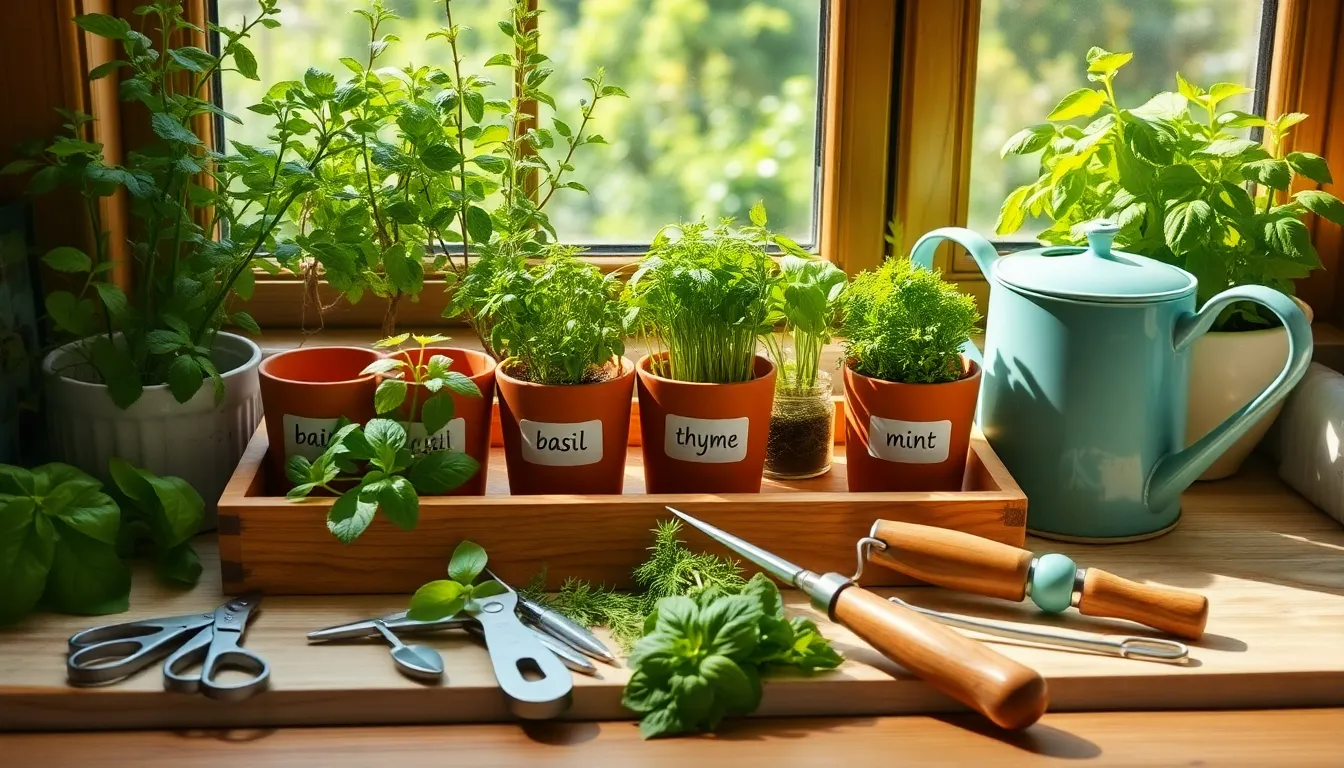Imagine stepping into your kitchen and snipping fresh basil or mint right from your windowsill. Whether you’re a novice gardener or seasoned green thumb, cultivating herbs indoors opens up a world of flavors and fragrances that can transform your culinary creations and invigorate your living space. The convenience and satisfaction of growing your own herbs are unparalleled, and with the right tools, the process can be both rewarding and straightforward.
In the coming sections, we will explore the essential tools that make indoor herb gardening a breeze, from the perfect pots to the ideal lighting solutions. You’ll discover how choosing the right equipment not only simplifies the growing process but also enhances the health and vibrancy of your plants. Whether you’re looking to start small with a few pots on your windowsill or planning a more ambitious indoor herb garden, this guide will provide the insights you need to cultivate lush, thriving plants year-round.
Delving into the specifics, we’ll discuss tools that cater to the unique needs of indoor environments, ensuring your herbs flourish regardless of the season. Our aim is to equip you with practical, actionable advice that empowers you to nurture your indoor garden with confidence. Join us as we embark on this aromatic journey, unlocking the secrets to successful indoor herb gardening and bringing nature’s bounty into your home.
Choosing the Perfect Pots
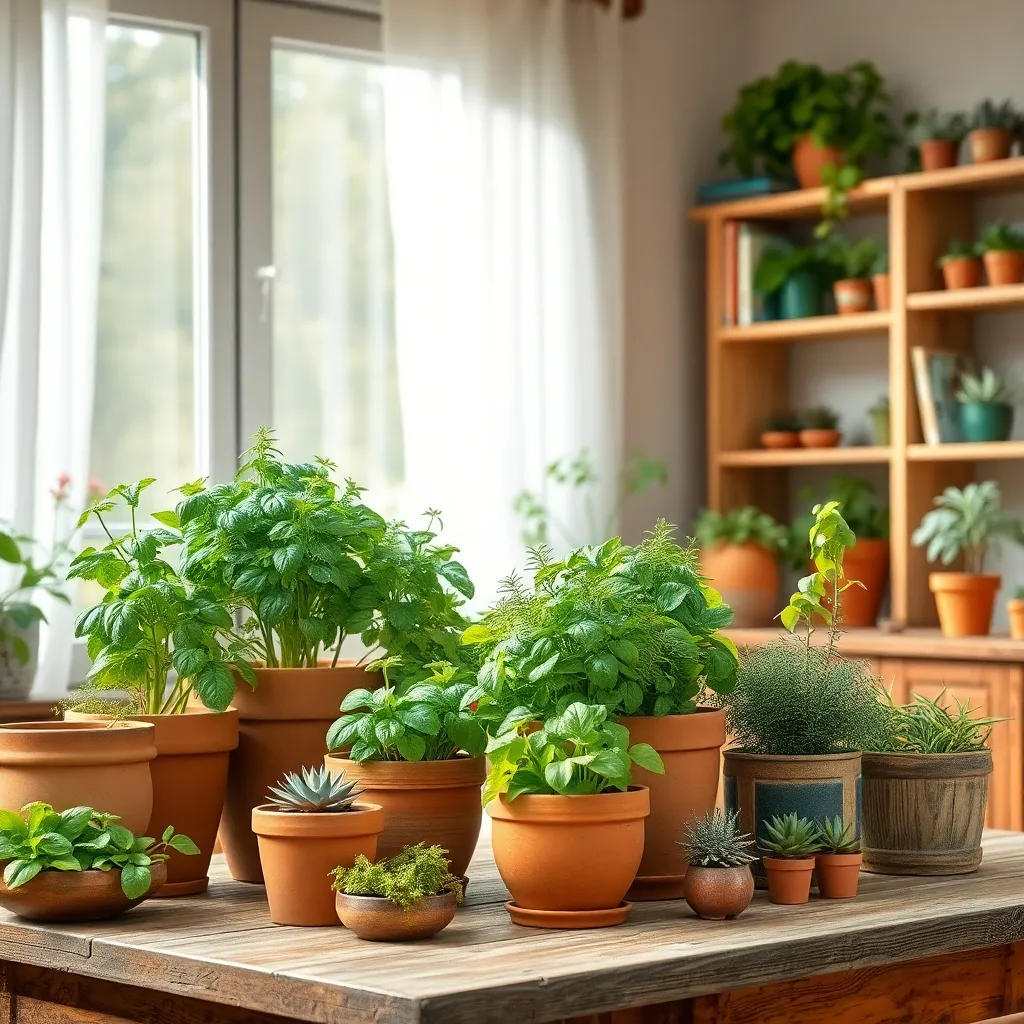
When selecting pots for your indoor herb garden, consider both the size and material of the containers. Herbs like basil, mint, and parsley need pots with a minimum diameter of 6-8 inches to allow healthy root growth.
Terracotta pots are a popular choice due to their porous nature, which allows for better air and moisture exchange. However, they may dry out more quickly than plastic or glazed pots, so ensure regular watering, especially during warmer months.
For those looking to grow herbs that prefer drier conditions, such as rosemary or thyme, clay pots can be particularly beneficial. These pots help prevent overwatering by allowing excess moisture to evaporate more readily.
Advanced gardeners might consider self-watering pots to maintain consistent moisture levels and reduce the risk of underwatering. These pots are particularly useful for busy individuals who may not be able to water their herbs daily.
Regardless of the pot type, ensure that each container has adequate drainage holes to prevent root rot. Placing a layer of pebbles at the bottom of the pot can also improve drainage and help maintain the health of your herbs.
Lighting Solutions for Indoor Herbs
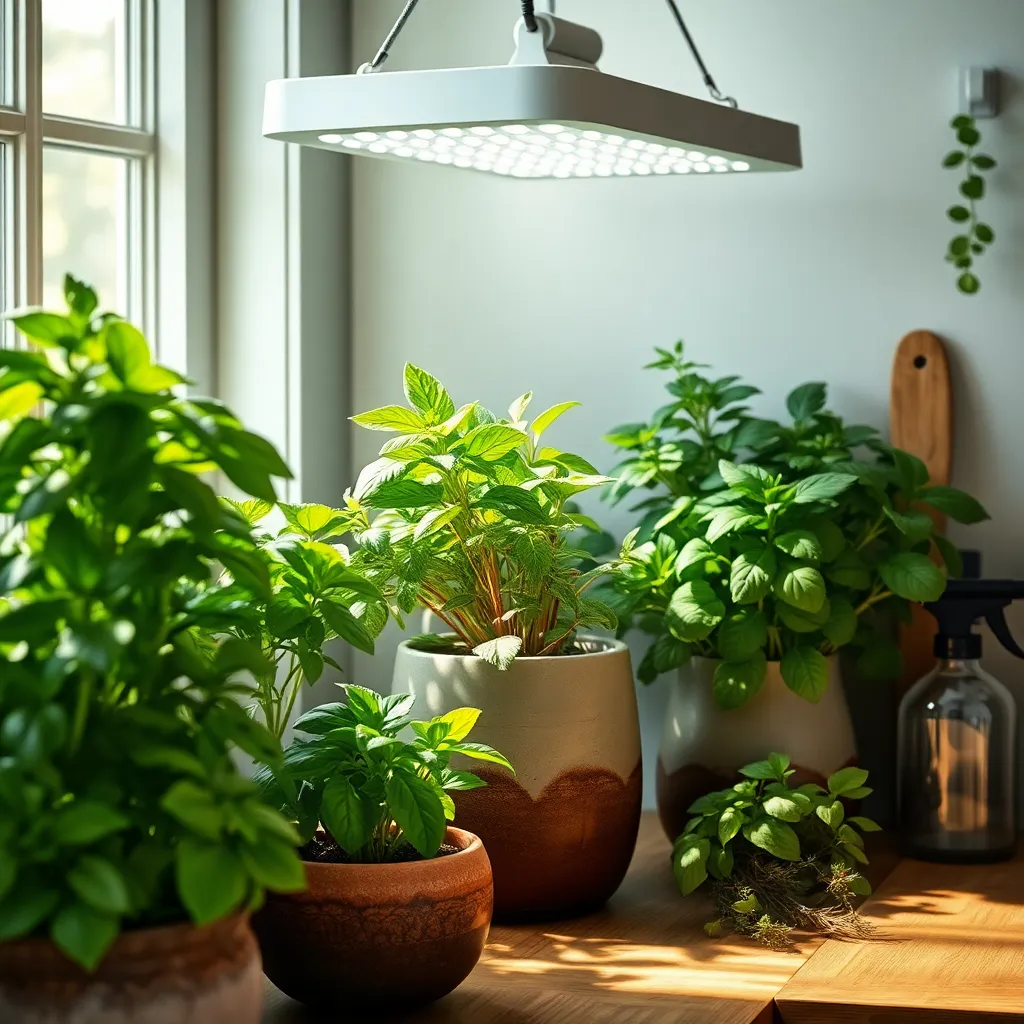
Ensuring your indoor herbs receive the right amount of light is crucial for their growth and vitality. Natural light is ideal, so position your herb pots near a south or west-facing window for optimal light exposure.
When natural light isn’t sufficient, supplemental lighting can make a big difference. LED grow lights are an excellent choice due to their energy efficiency and ability to mimic natural sunlight.
Adjust the distance between the grow lights and the plants to prevent overheating and ensure proper light distribution. A general rule of thumb is to place LED lights about 12 inches above the herbs, but always check the specific requirements for your plant type.
For those with limited window space, consider a rotating schedule for your herb pots to ensure each plant receives adequate light throughout the day. This method not only maximizes light exposure but also helps maintain uniform growth among your indoor herbs.
Soil Mixes for Optimal Growth
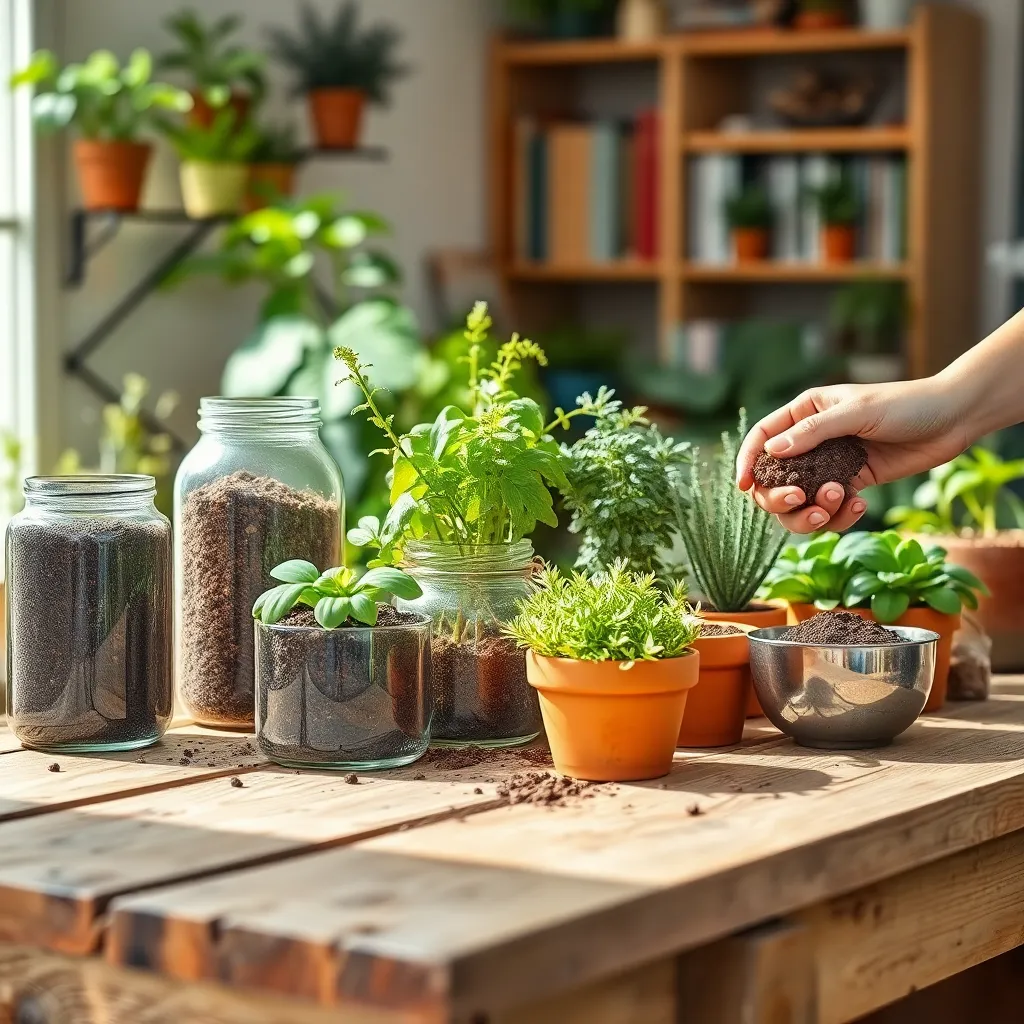
Creating the right soil mix for indoor herbs is essential for their growth and vitality. Start with a base of high-quality potting soil, which provides the nutrients and drainage herbs need to thrive indoors.
For optimal drainage and aeration, consider adding perlite or vermiculite to your soil mix. These materials help prevent waterlogging, a common issue in container gardening that can lead to root rot.
Herbs such as rosemary and thyme favor a slightly sandy soil, which can be achieved by mixing in coarse sand. This addition enhances drainage and mimics their natural Mediterranean habitat, promoting healthier growth.
For those looking to go a step further, adding worm castings can boost soil fertility and provide a slow-release source of nutrients. This organic amendment enriches the soil with beneficial microbes, supporting robust and resilient plants.
Regularly check the moisture level of your soil by sticking a finger about an inch deep into the mix. If it feels dry at this depth, it’s time to water—ensuring your herbs stay hydrated without being overwatered.
Must-Have Watering Tools
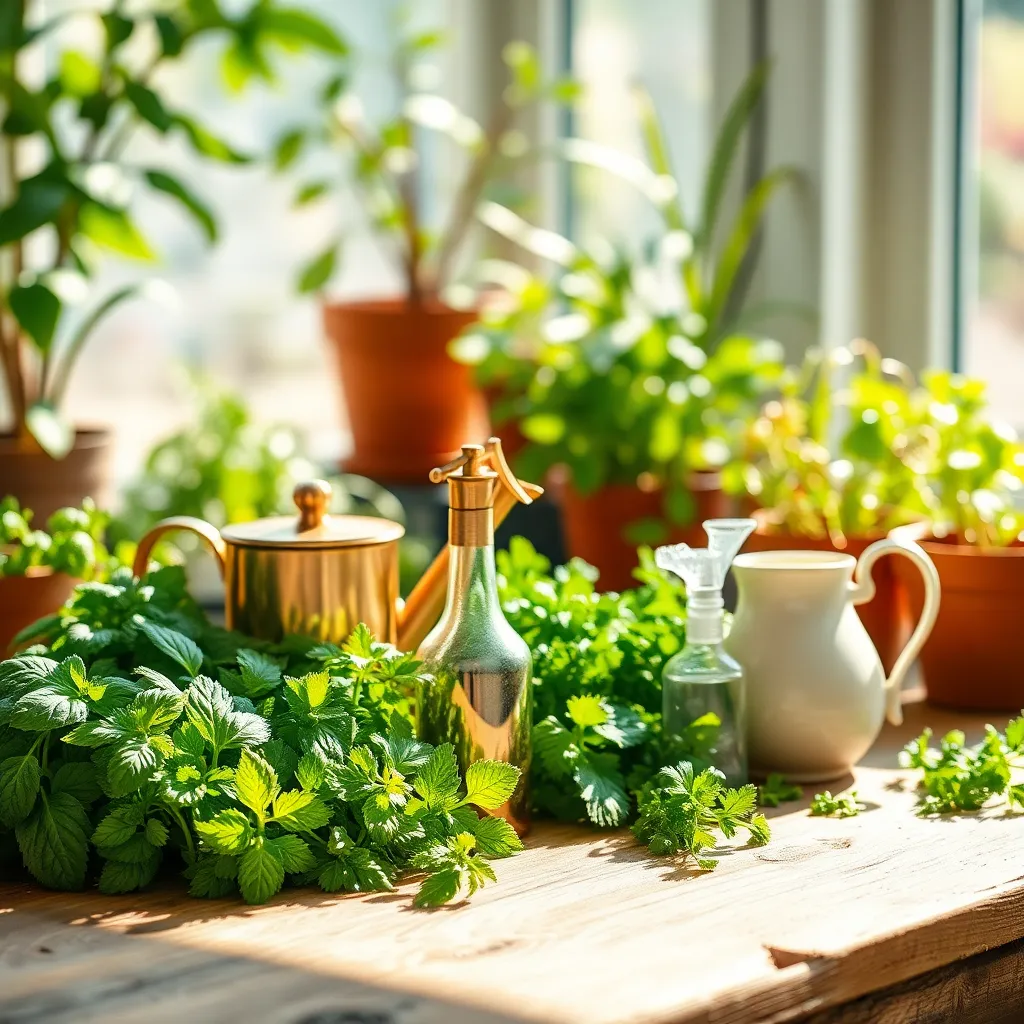
Proper watering is crucial for thriving indoor herb gardens, and having the right tools can make all the difference. A good quality watering can with a narrow spout is essential for reaching into pots without disturbing the soil. Choose one that offers precision and control to ensure your herbs receive just the right amount of water.
For those who want more advanced options, consider investing in a plant mister. This tool is perfect for herbs that prefer higher humidity, like mint and basil, as it gently increases moisture without over-saturating the soil. Regular misting can help maintain ideal humidity levels and keep your herbs lush and healthy.
Another must-have is a moisture meter, which helps take the guesswork out of watering. By inserting the probe into the soil, you can determine when your herbs actually need water, preventing overwatering—a common mistake among beginners. This tool is especially useful for herbs like rosemary, which are susceptible to root rot if kept too wet.
Lastly, a drip tray is a simple yet effective tool for indoor herb gardening. Placing a tray under your pots will catch excess water and prevent spills, protecting your surfaces and keeping your growing area tidy. Ensure the tray is emptied regularly to prevent stagnant water, which can attract pests or cause mold.
Essential Pruning and Harvesting Tools
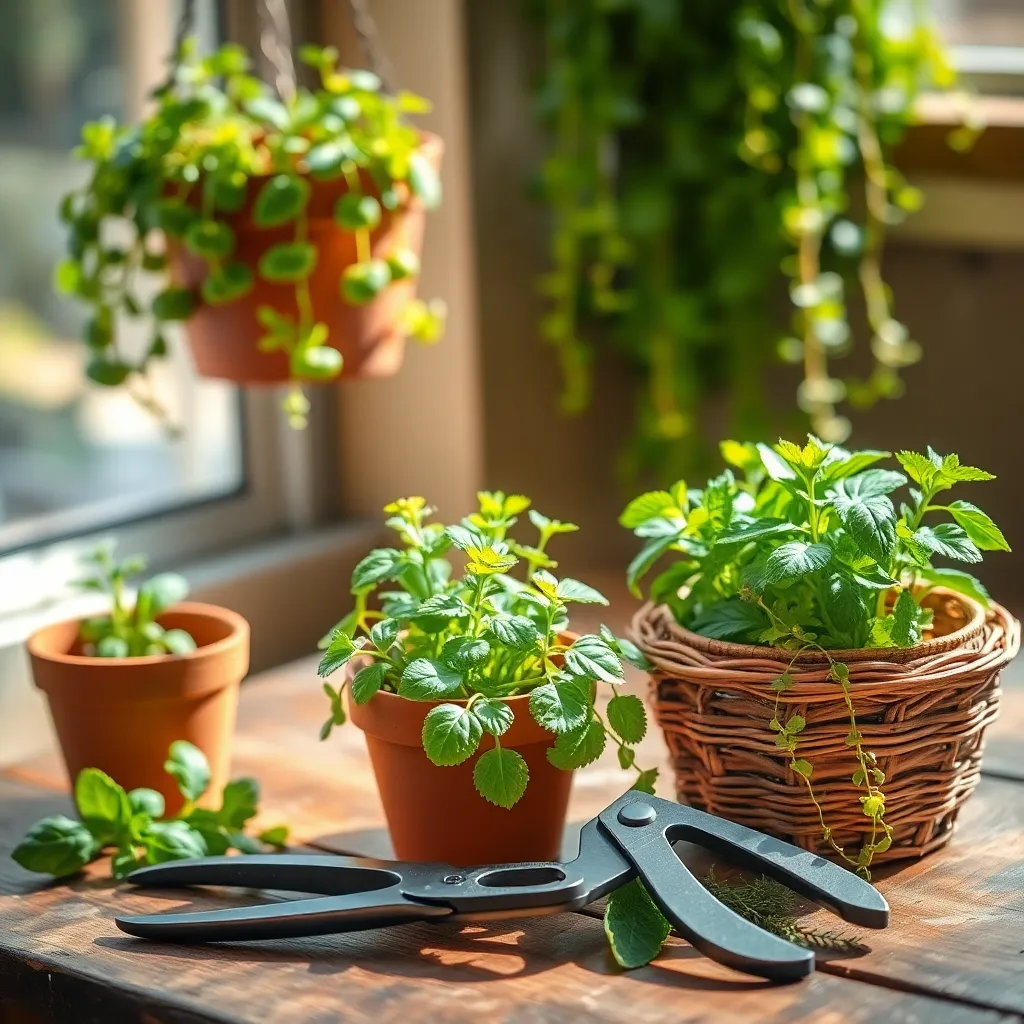
When it comes to pruning your indoor herbs, having the right tools is crucial for maintaining healthy growth. A pair of sharp pruning shears is essential for making clean cuts, which help prevent plant disease and encourage robust regrowth.
Investing in herb scissors can make harvesting herbs like basil and chives more efficient. These scissors have multiple blades that allow you to quickly snip leaves without damaging the plant’s delicate stems.
For those who want to take their pruning skills to the next level, consider using a bonsai pruning set. These tools are designed for precision and can be especially useful for shaping your herb plants, ensuring they remain compact and well-formed.
Regular pruning not only keeps your herbs looking tidy but also promotes a continuous harvest. By cutting back your plants frequently, you stimulate growth and ensure a steady supply of fresh leaves for your kitchen.
Conclusion: Growing Success with These Plants
In exploring the essential tools for cultivating herbs indoors, we’ve uncovered five key relationship concepts vital for nurturing growth: communication, patience, adaptability, commitment, and support. Just as each herb requires the right conditions to thrive, so too do relationships. Communication ensures clarity and understanding, while patience allows for growth at its own pace. Adaptability helps you navigate changes, commitment strengthens bonds, and support nurtures mutual wellbeing.
To immediately apply these insights, choose one area where you feel growth is needed in your relationship and focus on enhancing it this week. Whether it’s improving communication or showing more support, taking actionable steps can lead to meaningful change.
Remember, successful relationships are like flourishing indoor gardens—requiring ongoing care and attention. Bookmark this article to revisit these concepts whenever you need a reminder or a boost. By keeping these tools handy, you’ll be equipped to cultivate a thriving relationship that stands the test of time.
Looking forward, embracing these principles can pave the way for enduring relationship success, cultivating bonds that are as resilient as they are rewarding. Take the first step today, and watch your relationships blossom.

